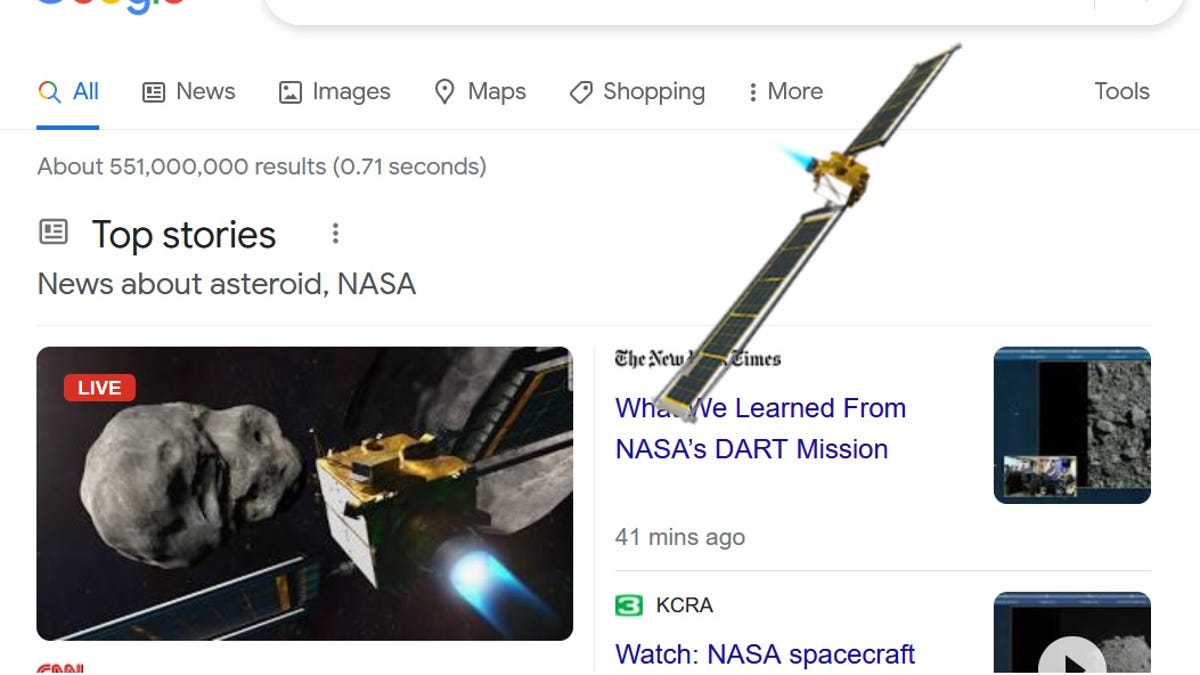Google Crashes NASA's Asteroid Collision Party With DART Easter Egg
The search giant celebrates NASA's search for an intergalactic defense.

DART's floats across Google's search results for, well DART, before crashing into the other side of the page in a puff of dust.
NASA just crashed a $325 million spacecraft into a Colosseum-size asteroid about 7 million miles from Earth. The event was a joyous occasion.
To celebrate the space agency's trailblazing planetary defense probe, Google created a search easter egg that offers a graphical demonstration of when DART, the Double Asteroid Redirection Test spacecraft, completed its long-hoped-for demise on the asteroid Dimorphos on Monday. A simple search on Google for "dart," "dart probe" or even "double asteroid redirection test" will generate a search results page with a representation of the spacecraft speeding across the page until -- poof -- it vanishes into a puff of dust, leaving the page you're looking at slightly askew.
And that was the point of the entire mission.
Your Google search could reveal something smashing! Search for "NASA DART" on @Google to see a demonstration of browser, uh, planetary defense. pic.twitter.com/ZuxtlgaLJ1
— NASA (@NASA) September 27, 2022
The purpose of the long-planned collision is actually collision avoidance -- as in, upending the course of an Earth-bound asteroid to avoid catastrophe. Think of it as a Hail Mary in football, only in reverse. Like a linebacker getting just a few fingertips on the quarterback's pass, the intention was to prevent the ball, or in this case the asteroid, from reaching its intended receiver. Only this was a test to determine whether there's anything we can do to prevent a potentially life-ending event on Earth while the long bomb is still in space.
Changing an object's speed and trajectory could make a big difference. If NASA scientists can show the asteroid's movement has been altered, it will demonstrate we may be able to shift the orbits of Earth-threatening asteroids in the future and prevent them from barreling into the planet.
In the coming weeks and months, scientists will pore over data recorded by more than two dozen Earth-based telescopes to determine exactly how much the impact altered the path of the asteroid.
In the meantime, you'll have to suffice in enjoying a jarring collision from your search results. Go ahead -- it's safe.

